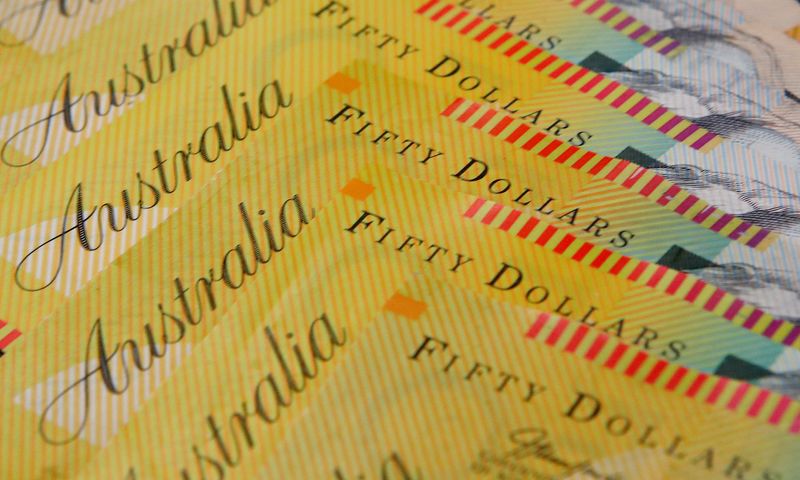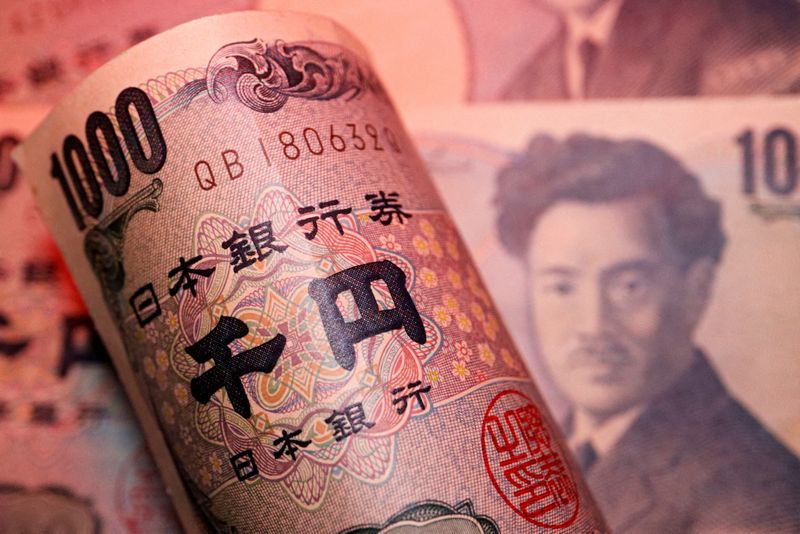Forex
Yen rises as traders look to BOJ, while dollar holds steady

By Harry Robertson and Rae Wee
LONDON/SINGAPORE (Reuters) -The yen rose on Tuesday as investors reacted to comments from a senior Japanese politician that added to pressure on the Bank of Japan to keep hiking rates to boost the currency.
Meanwhile, the dollar inched higher as traders waited for inflation data later in the week, and the Australian and New Zealand dollars suffered after China’s surprise interest rate cut.
The dollar was last down 0.55% against the Japanese yen at 156.13, after falling to a five-week low of 155.375 on Thursday.
Senior ruling party official Toshimitsu Motegi said overnight that the Bank of Japan should more clearly indicate its resolve to normalise monetary policy, including through steady interest rate hikes. The BOJ next sets rates on July 31.
“The yen derived support from further comments from Japanese politicians overnight,” said Lee Hardman, currency analyst at Japanese bank MUFG, who added that his comments indicated “growing unease” among politicians about BOJ policy.
“It closely follows calls last week from Digital Transformation Minister Kono Taro who called on the BOJ to raise interest rates to provide more support for the yen.”
The yen has found some support on the back of Tokyo’s recent bouts of intervention to prop up the currency and as traders looked to the BOJ’s decision. However, most economists polled by Reuters expect the BOJ to keep rates on hold at the meeting.
The , which tracks the U.S. currency against six peers, rose slightly to 104.36, after falling to a four-month low of 103.64 last week.
The euro was down 0.22% at $1.0868. Sterling was 0.15% lower at $1.2911.
Trading was relatively subdued in a week with little in the way of economic data until the release of U.S. personal consumption expenditure (PCE) inflation figures for June on Friday.
The market reaction to U.S. President Joe Biden’s decision to bow out of the election race was muted, though there was some unwinding of the so-called Trump trade, which has seen the dollar and U.S. Treasury yields ease a touch.
The Australian and New Zealand dollars struggled to regain their footing on Tuesday after China’s move to cut several key interest rates.
China surprised markets on Monday by cutting major short and long-term interest rates in its first such broad move since last August, signalling intent to boost growth in the world’s second-largest economy.
The two Antipodean currencies, often used as liquid proxies for the , extended losses after slumping in the previous session in the wake of the news.

The Australian dollar fell to a three-week low of $0.6622, while the New Zealand dollar hit its weakest level since early May at $0.5962.
“For the and the , they tend to be reflecting a more liquid and free expression in terms of the realities currently facing the Chinese economy,” said Rodrigo Catril, senior FX strategist at National Australia Bank (OTC:).

 Forex3 years ago
Forex3 years agoForex Today: the dollar is gaining strength amid gloomy sentiment at the start of the Fed’s week

 Forex3 years ago
Forex3 years agoUnbiased review of Pocket Option broker

 Forex3 years ago
Forex3 years agoDollar to pound sterling exchange rate today: Pound plummeted to its lowest since 1985

 Forex3 years ago
Forex3 years agoHow is the Australian dollar doing today?

 Cryptocurrency3 years ago
Cryptocurrency3 years agoWhat happened in the crypto market – current events today

 World3 years ago
World3 years agoWhy are modern video games an art form?

 Commodities3 years ago
Commodities3 years agoCopper continues to fall in price on expectations of lower demand in China

 Economy3 years ago
Economy3 years agoCrude oil tankers double in price due to EU anti-Russian sanctions


























